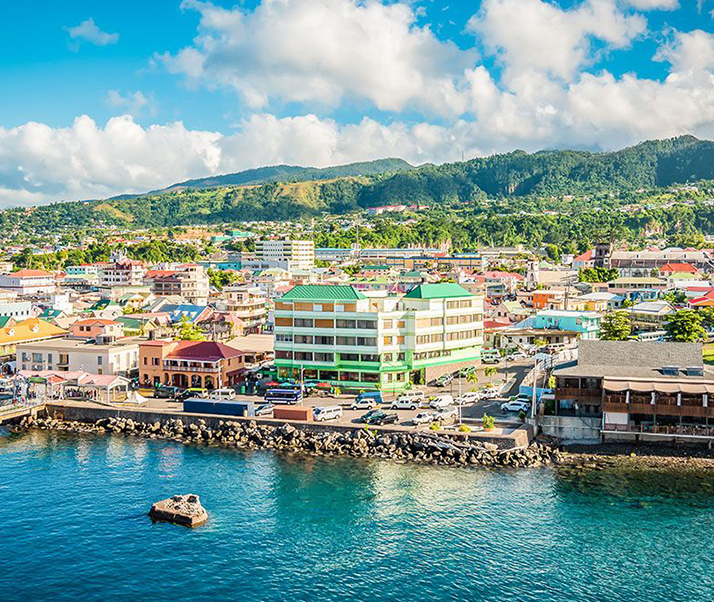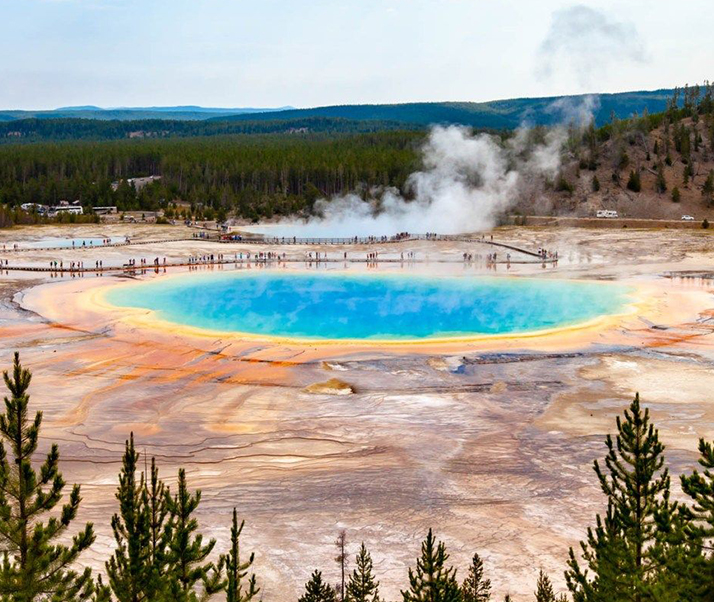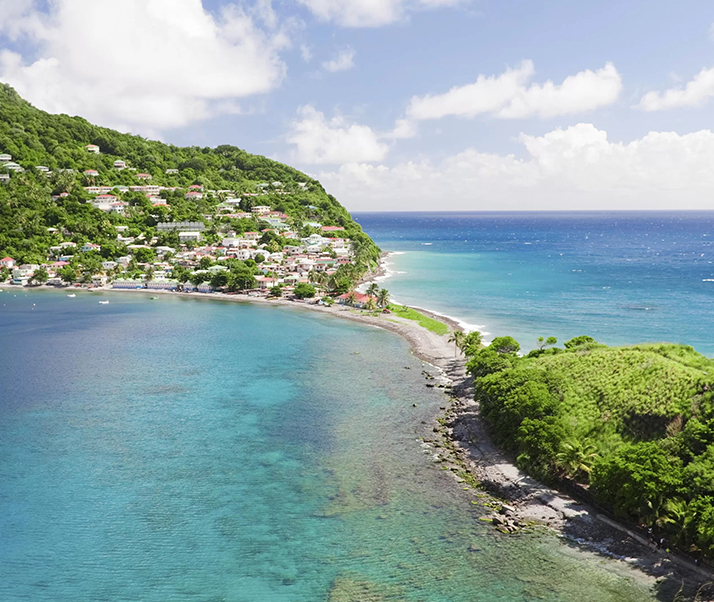+91 9884683139
talk to our Destination
specialist

Known as “The Nature Isle of the Caribbean”, Dominica is one of the most beautiful islands on the planet. A tropical paradise, with rugged, volcanic mountains, Dominica’s landscape boasts everything from waterfalls to mud ponds, as well as an array of exotic fauna.
Dominica is a forested Caribbean island nation with a year-round tropical climate, national parks, rare indigenous birds and the second-largest boiling lake in the world. Geologically speaking, Dominica is one of the youngest islands in the Caribbean chain. It is a spry 26 million years old, still actively evolving with continuous geothermal activity.
Dominica is a vibrant tapestry of European and African cultures, with the Caribbean’s only remaining population of pre-Columbian Carib Indians. Properly known as the Kalinago, Dominica’s indigenous people inhabit a 3,700-acre territory or reserve on the eastern coast of the island.
It is an inclusive island with a rich cultural makeup, Dominica offers a vibrant mix of European and African influences.
Key Facts
73,389
Roseau
East Caribbean Dollar
English
GMT -4
Nov-May

Dominica offers an array of places to stay as varied as its terrain. Guests can choose from spots that specifically cater to hiking and diving enthusiasts
No matter what you choose to eat, Dominica offers an authentic adventure for the culinary inclined. With wholesome fresh fruits, vegetables, spices, breads, and exotic fish, you’re sure to find something that delights your taste buds.
Whether you’re looking for the best diving in the Caribbean, a hiking trip through the rainforest, or simply to soak up the sun and breathe in the fresh rainforest air, Dominica welcomes you! The Nature Island has everything from extreme sports to eco tours
from spas to whale watching, plus the Morne Trois Pitons National Park—the only UNESCO World Heritage Site in the Caribbean. No matter what you choose to do, Dominica offers an authentic adventure amid the unforgettable magic of nature unspoiled.
Discover Dominica - Lose your Cares.. Feed your Soul… A discovery of what nature—its eternal beauty, its breathtaking vistas, its primal power—can do to nourish your soul, delight your senses, and drown your cares.

Historic Capital City
The capital city, Roseau, is surrounded by the Caribbean Sea, the Roseau River, and Morne Bruce, and is built on the site of the ancient Kalinago Indian village of Sairi. The quaint town is a picturesque array of 18th century French architecture, and is small enough to be easily explored on foot.
The oldest part of town is around Old Market Square, formerly the original slave market. The Old Market square is now a vibrant craft vendors’ market for cruise and other visitors.
Notable sites around Roseau include The New Market on the Riverbank displaying fresh tropical fruit, vegetables and herbs. The Roseau Market is liveliest on Saturday mornings, but is opened all day and through the nights from Friday to Saturday.
Notable sites around Roseau include The New Market on the Riverbank displaying fresh tropical fruit, vegetables and herbs. The Roseau Market is liveliest on Saturday mornings, but is opened all day and through the nights from Friday to Saturday.

Splendor of Nature in its Rawest Form
The second largest of its kind in the world, Boiling Lake is a flooded fumarole from a volcano in the area known as the Valley of Desolation — words that seem to describe life on another planet but which perfectly capture what you’ll find if you’re daring enough.
200 feet wide and its depth unknown, the lake is enveloped by swirling clouds of vapor and resembles a cauldron of furiously bubbling greyish-blue water superheated from the molten magma below the surface of the surrounding rock.
The awe of Boiling Lake is surpassed only by the breathtaking vistas that surround it—with clear views of the ocean, the neighboring island of Martinique, and timeless terrain shaped by erosive and volcanic forces of nature over 200 millions years in the making. The surrounding area is also home to some of the hardiest creatures on the planet — small lizards and a few species of insects

Haven of Tropical Forests
An epitome of natural beauty, Cabrits National Park is also known for its historic significance.Cabrits National Park is nestled on the Cabrits Peninsula on a forested cliff a mile north of downtown. The park is popular for its remarkable 18th century British..
garrison structure Fort Shirley and Fort George located just five-minute walk uphill from the entrance. Forts overlook the lovely view of Prince Rupert Bay that looks mystifying in the late afternoon. The park also house tree thrilling long trails that crisscross the park via the officers' quarters, the soldiers' barracks, the powder magazine and other relics from the past.
A small museum in the park exhibit amusing displays featuring collection of artefacts.

Experience the Spectacle of Dominica’s Rainbow – Colored Seascape
Named for the bubbling waters rising from volcanic thermal springs on the ocean floor, Champagne Reef attracts diving and snorkeling enthusiasts from around the world. The reef’s plummeting cliffs and towering..
volcanic formations perfectly match Dominica’s massive mountains and gorges. Whether diving or snorkeling in these warm waters, you’ll encounter a dazzling explosion of color. The reef holds a paint box of sponges with names like pink azure, red rope, yellow tube, and purple vase, to name just a few. And greeting you as you go are countless crinoids — also known as water lilies. These marine animals attached themselves to coral and sponges, waving delicate tubular wands of red, yellow, each one hypnotizing in its beauty.
Matching the color and variety of the sponges and crinoids is a fascinating range of undersea creatures — octopus, rays, trumpet fish, parrotfish, frogfish, batfish, hawksbill turtles, seahorses, sea snakes, and eels. You may even encounter the remains of the 17th century Spanish shipwreck.
Don’t miss your chance to dive into the beauty and surprise of Champagne Reef.